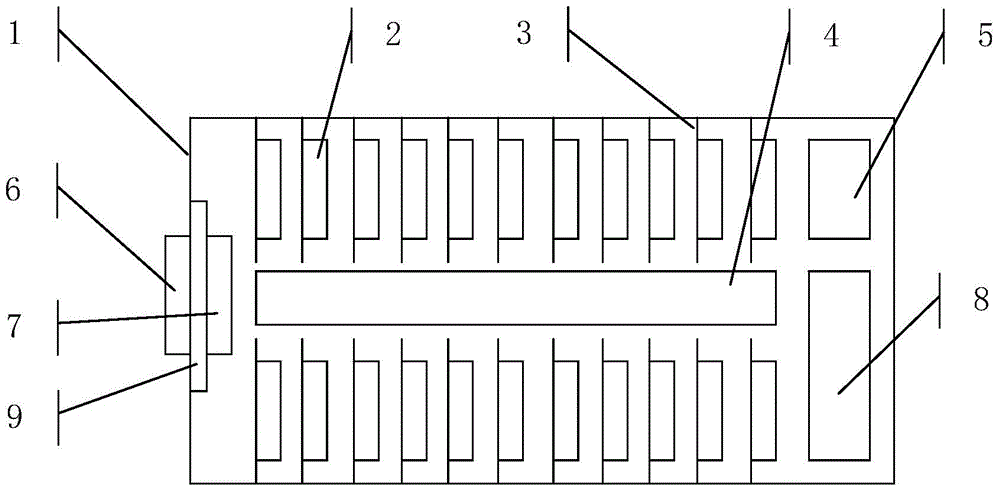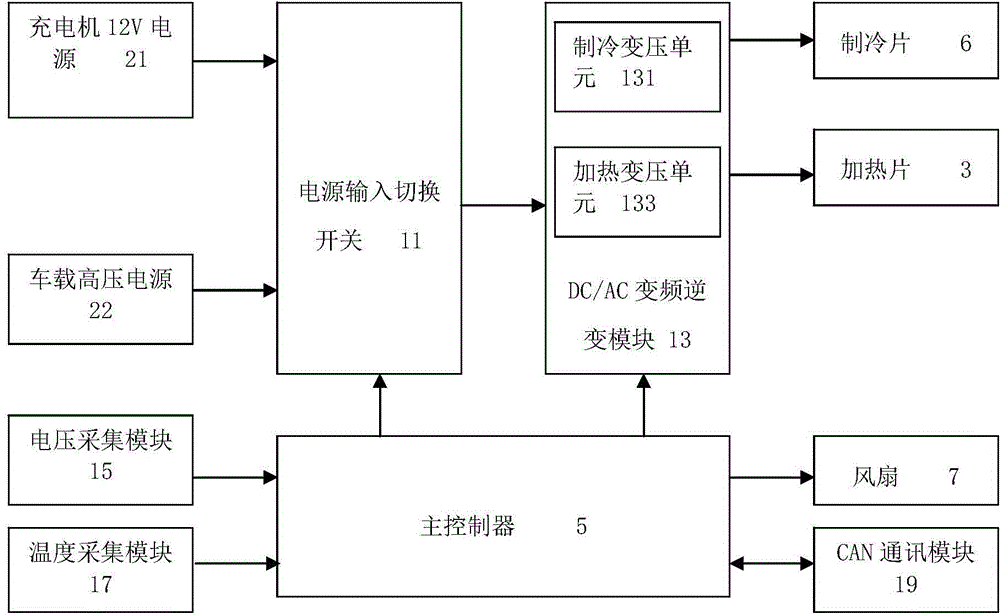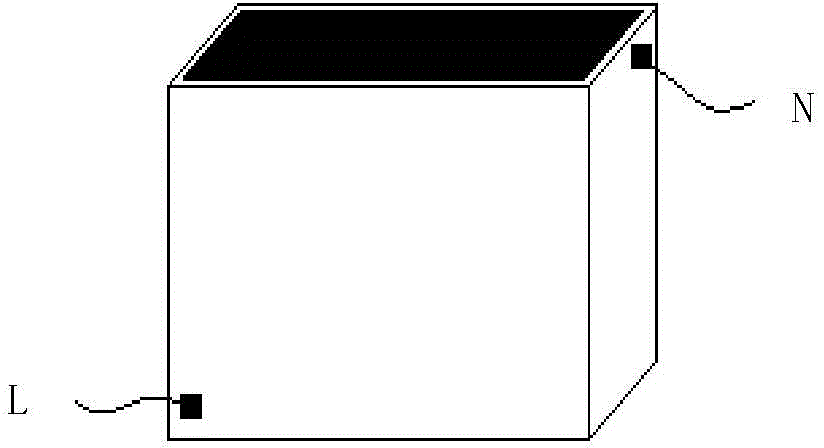Constant-temperature thermal management system for lithium-ion power battery pack
A power battery pack and management system technology, applied in the field of high-voltage variable frequency constant temperature thermal management system, can solve the problems of shortening the life of the energy storage system, limited adjustment degree, and less charging power, so as to improve energy utilization rate and increase driving range , to improve the effect of accuracy
- Summary
- Abstract
- Description
- Claims
- Application Information
AI Technical Summary
Problems solved by technology
Method used
Image
Examples
Embodiment Construction
[0028] In order to further explain the technical means and effects of the present invention to achieve the intended purpose of the invention, the specific implementation methods and steps of the lithium-ion power battery pack constant temperature thermal management system proposed according to the present invention will be described below in conjunction with the accompanying drawings and preferred embodiments. , structure, characteristics and functions in detail.
[0029] see figure 1 , figure 2 Shown are the structural schematic diagram of the lithium-ion power battery pack and the block diagram of the constant-temperature thermal management system of the lithium-ion power battery pack of the present invention, respectively.
[0030] The lithium-ion power battery pack of the present invention includes: a battery box 1, a plurality of single lithium batteries 2, a heating plate 3, an air duct 4, a main heat management controller 5; an electronic cooling plate 6; a fan 7; a B...
PUM
 Login to View More
Login to View More Abstract
Description
Claims
Application Information
 Login to View More
Login to View More - R&D
- Intellectual Property
- Life Sciences
- Materials
- Tech Scout
- Unparalleled Data Quality
- Higher Quality Content
- 60% Fewer Hallucinations
Browse by: Latest US Patents, China's latest patents, Technical Efficacy Thesaurus, Application Domain, Technology Topic, Popular Technical Reports.
© 2025 PatSnap. All rights reserved.Legal|Privacy policy|Modern Slavery Act Transparency Statement|Sitemap|About US| Contact US: help@patsnap.com



